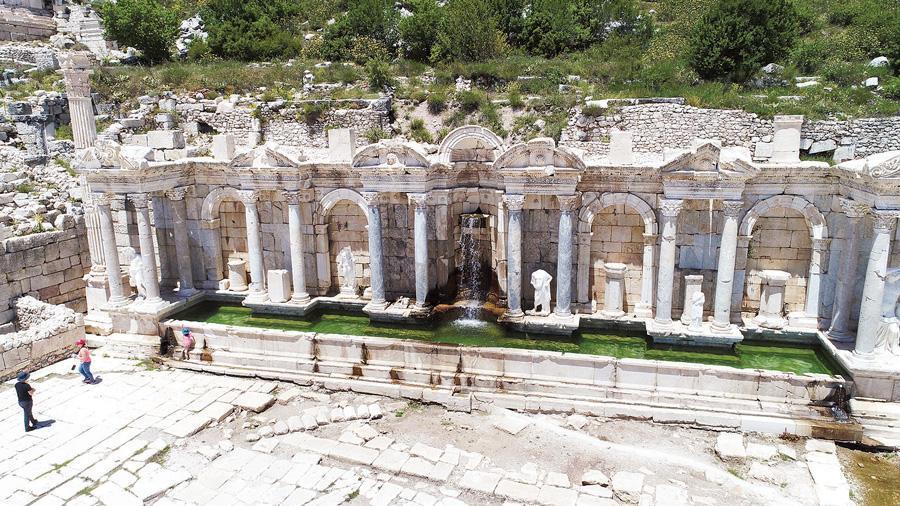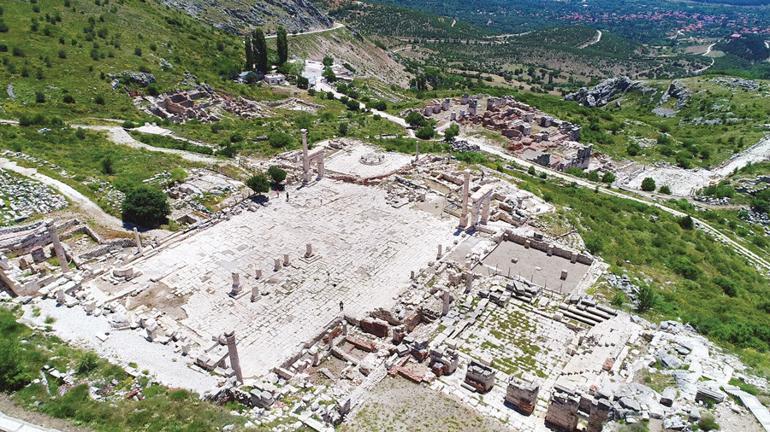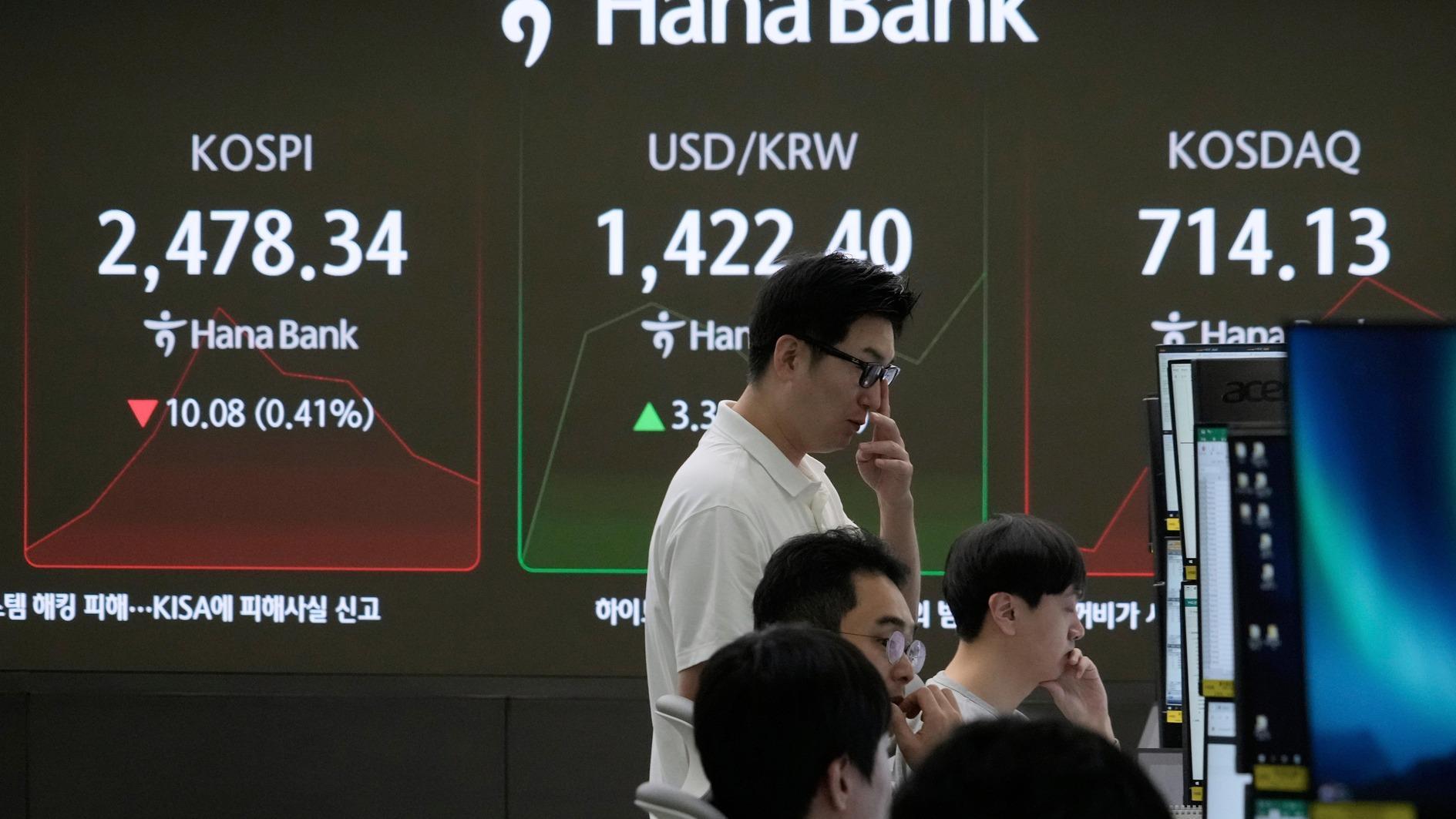Sagalassos expects 50,000 visitors
BURDUR – DHA

The ancient city of Sagalassos in the Mediterranean province of Burdur’s Ağlasun district is expecting to welcome 50,000 visitors this year.
Just like 2,000 years ago, the natural spring water from a mountain is still flowing in the ancient city’s Antoninler fountain, which was built between 160 and 180 A.D.
The Roman city of Sagalassos, where Anatolian people first settled in 3,000 B.C., hosted dozens of civilizations throughout its history.

Although located on a 160-meter-high hill far from the main road, the city received 35,000 visitors last year. Now the goal is to welcome 50,000 visitors in the ancient city, where lots of unique historical artifacts have been unearthed so far during excavations.
The most striking structure in Sagalassos is its fountain, which bears the name of the Antoninler family, some members of whom were Roman emperors.
The natural spring water from the Ağlasun Mount is like a small waterfall, with its running water falling down to fill a pool.
The splendid fountain in the north of Upper Agora is 28 meters in length and nine meters in height. Stones in seven different colors were used in its construction. The 81-cubicmeter pool is in front of the fountain.
The water flows from a height of 4.5 meters and fills the pool. Excavations and restorations were initiated in the fountain in 1998 and the artifact was reactivated in 2010.
The originals of four sculptures of the fountain that were unearthed in the excavations are on display at the Burdur Archaeology Museum while their replicas can be seen in the fountain.
It is believed that the fountain was built by the most important benefactor in Safgalassos, Titus Flavius Severanus Neon, and his wife.
Speaking to the state-run Anadolu Agency, Burdur Archaeology Museum Director Hacı Ali Ekinci said Sagalassos was known by all scientists throughout the history. He said that the city made its name heard in the 4th century after Alexander the Great started seizing all Anatolian cities one by one.
Ekinci said the city was discovered in 1706 by Paul Lucas during examinations carried out with the order of French King Louis but it could not be localized.
He said that British priest Arundell rediscovered it in 1824. And later on, travelers in Anatolia visited Sagalassos.
New excavation term in July
Ekinci said that excavations in the ancient city were initiated in 1990 by a team from Belgium Leuven University and Turks under the leadership of Professor Marc Waelkens, and continued for 25 seasons until his retirement in 2013.
Then Professor Jeroen Poblome became the head of excavations, which will start in July.
Speaking about the Antoninler family, Ekinci said, “There were many emperors from this family including Nerva, Hadrian, Antoninus Pius and Marcus Aurelius. This family built very important structures. At a time when the Roman economy was very good, they built very beautiful immovable cultural heritages in every city. We found 3,600 pieces and reunited them. The fountain’s restoration was finished in 2010 and the water is still flowing from the Ağlasun Mountain.”
Ekinci said that the four big sculptures unearthed during excavations were on display at the Burdur Museum due to security reasons, adding that the ones in the fountain were their replicas.
He said that the other highlights of the ancient city were a theater, library, heron structure, parliament building, empire bath and the gates in the square.
The ancient city of Sagalassos last year was visited by more than 35,000 people, most of whom were foreigners, said Ekinci, adding that they expected 50,000 people this year.
He said the visitor profile had changed in recent years, adding, “Transportation to the city is hard; it is 1,600 meters above sea level and far from the main road. If it were close to the main road, the ancient city could have had a million visitors every year.”
















